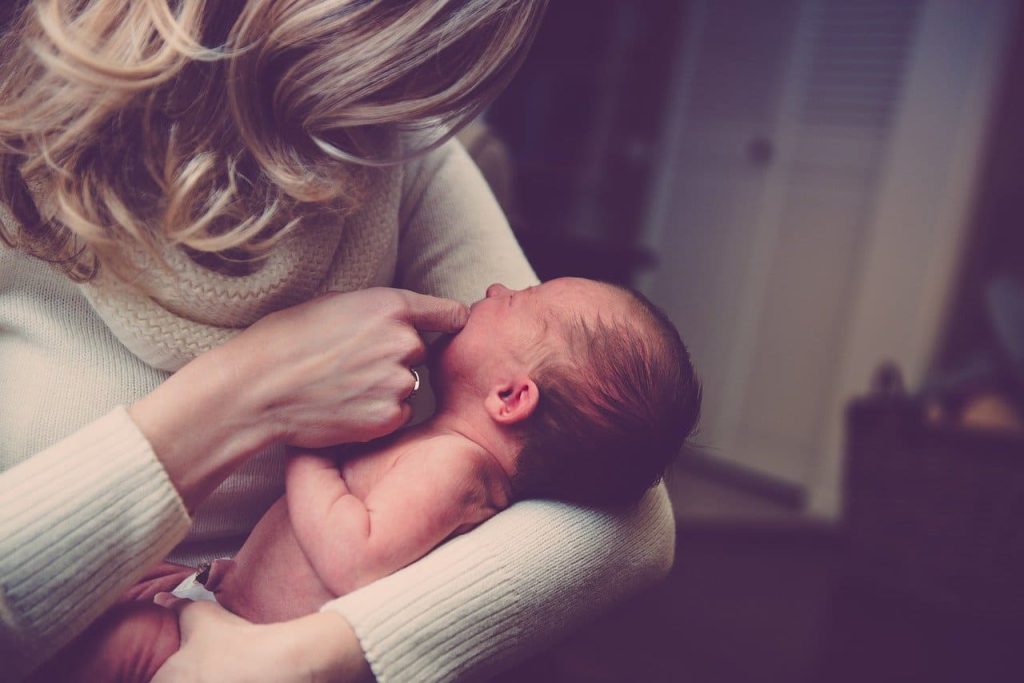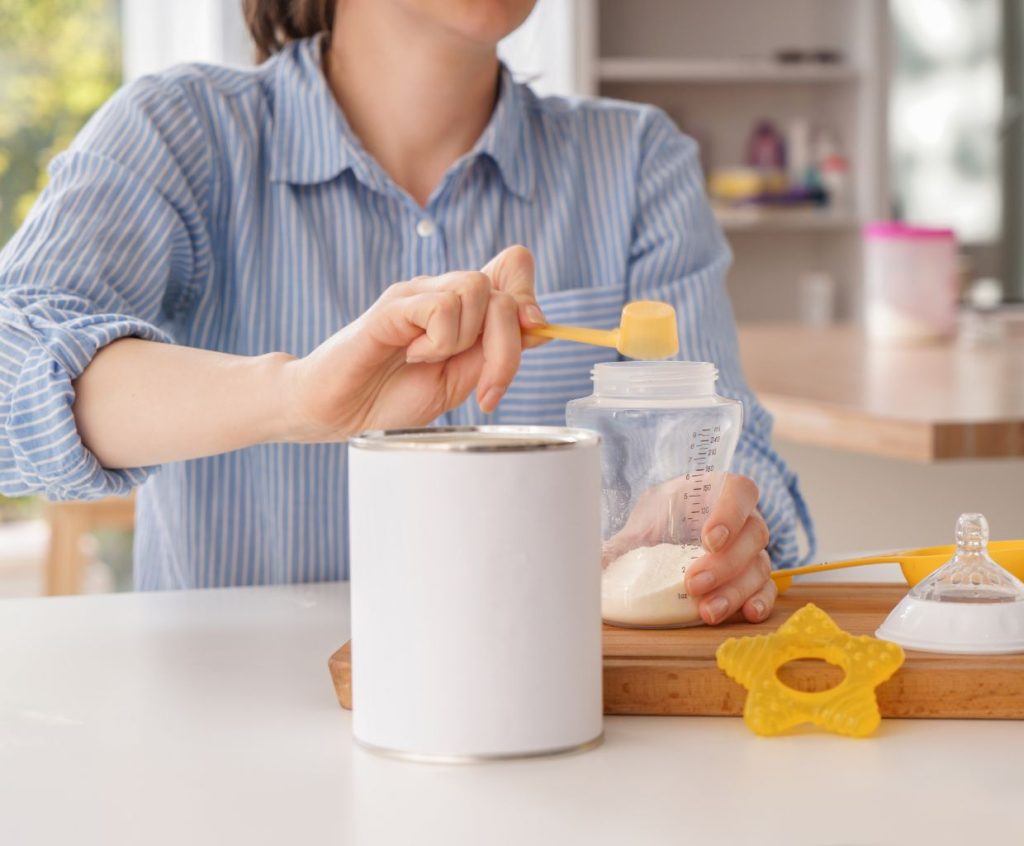How to Wean Your Baby – Learn 4 Easy Ways.
As a mum, you’ll know that breastfeeding is about the bond. And if you’re considering weaning, that’s OK! It can be a positive thing for both you and your baby. But how do you go about it? How to wean your baby from breastfeeding?
What is the best age to stop breastfeeding a baby?
There are many ways to wean your baby, and you can do it at any age. The best age to stop breastfeeding a baby depends on the child’s development, your goals, and what works for you as a mother. Some moms decide to stop when their babies are six months old, while others wait until their babies are 12 months old. Whatever your choice is, you must know how to wean your baby safely so that neither of you will have any problems adjusting.
The American Academy of Pediatrics recommends that mothers nurse their babies until they are 12 months old. However, every child is unique; some may be ready for solid foods as early as six months old, while others may need more time before being ready for solids. If you’re concerned about how long it will take for your child to be ready for solids, then talk with your pediatrician about what is best for your situation!
How to wean your baby in 4 stages
You can start introducing other foods when your baby reaches six months old. Some babies may take to it immediately, but others may need to gradually be weaned off breast milk. Here are the four stages of weaning:
1. The first Stage is called “transitional.” This involves switching from breast milk to formula or cow’s milk.
2. The second Stage is called “progressive.” This involves adding more solid foods and reducing the amount of formula or cow’s milk you give your baby by half each week until they are ready for solid foods alone.
3. The third Stage is called “complete.” This means giving your baby only solid food mashed into a puree consistency until all breastfeeding has stopped completely (usually between 12 and 18 months old).
4. The fourth Stage is called “extended,” which means giving your child pureed foods until they are at least two years old—or even older if they want it!
Tips on how to Wean your Baby off breastfeeding
Once you have decided when to wean your baby off the breast, the next question is how to wean. How you wean your baby depends on how old your baby is and his disposition. Infants are the easiest to wean. They are so small that they have not yet acquired an attachment to the breasts. Also, milk flows out of a bottle nipple faster than it flows out of a breast. So, as long as you provide them with food, an infant may happily take the bottle instead of the breast.
Babies who have developed an affinity for the breast. These babies may be more difficult to wean. They like the taste & smell of breast milk, and they like the warmth & comfort of mother’s breasts. To wean such a baby, you may need to leave the room and have someone else (husband, babysitter, grandma) offer the bottle. With you absent, he will not be reminded of your breasts, and being hungry, he may be enticed to drink from a bottle. If he does not drink from a bottle, try feeding him from a cup, a spoon, an eye dropper, or a syringe (with the needle removed).
How to wean toddlers down to 3 or 4 daily feedings will depend on the art of distraction. For example:
- Eliminate the noon-time feeding by giving him more table foods and a sippy cup of formula (or breast milk).
- Eliminate a pre-nap nursing session by taking him for a walk and letting him fall asleep in the stroller instead of falling asleep on the breast.
- Eliminate the morning feeding by distracting him with a lively breakfast table with many nutritious finger foods.
The before-bed feeding is the hardest to give up because your baby depends on that quiet and quality time to settle down for the night. If possible, let your husband or another adult take him to bed so that he is not confronted with you and your breasts, which has, until now, always been for him.
- To learn how to wean an older child, go to extended breastfeeding.
How to wean your baby: slowly vs. quickly
After you have decided to wean your baby, you can choose how to wean slowly & gradually or to wean quickly and definitively (cold turkey). If you actively work towards weaning, it is called “mother-led weaning.” If you allow your baby to wean himself, then it is called “infant-led” weaning. Infant-led weaning is the least stressful for your baby, but it may take a long time before you are done.
Weaning slowly
Weaning slowly is probably more accessible for you and Baby. Here, try to eliminate one breastfeeding session at a time. Allow a few days to pass before eliminating another breastfeeding session. Weaning slowly will allow your breast to adjust to the lower demand. Less demand will lead to less supply. You may experience some fullness and leaky breasts, but these inconveniences are minor and tolerable. Your baby will adjust to bottle feeding better if you wean slowly. Instead of denying him your breast cold turkey, you allow him a few weeks to transition from the breast to the bottle.
This is also doable if you have no time and need to wean quickly. Your breasts will become engorged, and you may feel pain and have milk leak out. However, these discomforts will lessen within 4 or 5 days. You may still have milk in your breast for a month after weaning, but it won’t leak out, and your breast won’t feel engorged.
How to Wean your Baby quickly
Weaning quickly may be difficult for your baby (unless he is a young infant and hasn’t developed an attachment to your breasts yet). Your baby may be used to having his meals at your breast and refuse to eat something different from a bottle. Here are a few things to try:
- Leave the room and let someone else feed him. He may be more willing to take “second best” rather than be hungry if you are nowhere in sight.
- Feed him from a cup instead of a baby bottle. A cup may be different enough that he will accept it as a “new and fun” way to drink and not realize it is a replacement for breastfeeding.
- Give your baby a bottle before he is overly sleepy. Tired babies are fussy and will be even more upset when they are denied breasts. Feed early enough, so you don’t have to deal with a hungry, sleepy, cranky baby.
Regardless of when or how to wean your baby, whether you wean quickly or gradually, it is essential to remember that they will be weaned. No baby has ever starved to death because he is too stubborn about drinking/eating from another source.
If not breast milk, then what?
You must provide babies under one year of age with expressed breast milk or baby formula. Typically, this is in a baby bottle, but if he refuses to drink from a baby bottle (because the nipple on the bottle is not the same as the nipple on your breasts), then you can try feeding him with a small plastic cup, a no-spill sippy cup, or a spoon. Depending on his disposition, you may need to be creative about how the formula (or breast milk) is delivered.
For a baby one year or older, you can give him cow’s milk or “second step” formulas designed for older babies. Healthy brain development requires fats, so give your baby homogenized milk, not fat-reduced or fat-free milk. If a baby is obese, the pediatrician may suggest fat-reduced milk. Otherwise, a healthy, normal baby can start drinking fat-reduced milk after two years.
When to introduce different food to your baby
- First Stage: starts at birth and lasts for one week. During this time, you should feed your baby only breast milk.
- Second Stage: begins at six months old and lasts until the child can eat solid food. You should give them breast milk six times a day and solid food three times a day.
- Third Stage: begins when the child reaches one year old and ends when they reach two years old. At this point, you should stop breastfeeding your child but continue giving them solid food with breast milk every two hours until they’re three years old.
- Fourth Stage: After the child turns three years old, you should no longer give them any breast milk as it could cause allergies as well as other problems later on in life



